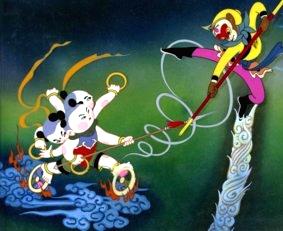| Interesting Facts about China's History | |
|---|---|
| Mar 13, 2006 19:49 | |
 | Chinese Emperor Shi Huang-Ti built a network of 270 palaces, linked by tunnels, and was so afraid of assassination that he slept in a different palace each night. The purpose of the Great Wall of China, was not especially to keep out the Huns from the north. The Huns could easily find places along the stretch that they could scale with ladders. But they couldn't get their horses across. Without their horses, they weren't very effective warriors. Paper was invented in China around 105 A.D., by the eunuch Ts'ai Lun. According to the official history of the Han dynasty (3rd century A.D.), Ts'ai Lun was given an aristocratic title after he presented Emperor Ho Ti with samples of paper. In 751 A.D., Chinese papermakers were captured by the Arabs at Samarkand, and by 794 A.D. several state-owned paper mills operated in Baghdad. The Arabs were manufacturing paper in Spain around 1150. It was not until 1590 that the first English paper mill was founded, at Dartford. The Chinese physician Hua T'o, born sometime between 140 and 150 A.D., was the first doctor known to perform surgery under general anesthetic. The potion used to render his patients unconscious was a mixture of hemp and strong wine called ma fei san. Prior to the communist revolution, a national holiday commemorated his birth. Fingerprinting was used in China as early as 700 A.D. Liu Ch'ing, who became the governor of China's Shansi province in 955 A.D., was born with two pupils in each eye. Among the important devices in naval technology developed by the Chinese are: the stern-post rudder, which appears on a pottery model of a boat dating from the first century A.D.; watertight compartments; and the paddle wheel, descriptions of which date from the fifth century A.D. It is not true that the early Chinese used gunpowder only for fireworks. They had forms of guns (invented in 1288), bombs, grenades, rockets, land mines, and other arms. In 1985 the Chinese press announced the discovery of a strip of land 1,000 metres by 15 metres, running down from a hill to a river, in Huanre County, Liaoning province. In winter when the surrounding temperature dips to -30° Celsius, the strip remains at 17° Celsius. In summer the reverse occurs, and the strip freezes to a depth of 1 metre. The locals use the strip for growing vegetables in winter and as a refrigerator in summer. The world's largest billboard is 300 metres long and 45 metres high. It is in southeast China, overlooking the Yangtze River at Chongqing. However, this area is so continually foggy that no-one has advertised on it since 1998, so China has decided to tear it down. Three of the world's ten longest rivers have their source in China, and a further three have their source in Mongolia. The Chinese city of Chinkiang, now 150 miles inland, was once a seaport. Silt of the Yangtze River has built up the land for that distance. |
| Jul 5, 2008 09:36 | |
 | More interesting facts: During the 1920's several foreign nations had troops stationed in Beijing. the French troops officers were from France but the enlisted soldiers were from the then French colony of Vietnam! When Beijing's Temple of Heaven (as seen on the National seal) was rebuilt after a fire in 1889 the new pillars supporting the roof were imported from the state of Oregon in the U.S.A.! While many have seen the old 1966 Steve McQueen movie "The Sand Pebble" about a U.S. river gunboat in China, few know that besides the 18 or so U.S. gunboats there were gunboats from Great Britain (34), Japan (17), France (12), Germany (8), Italy (3) and Portugal (1). (The counts are estimates) Perhaps the most famous gunboat was the U.S. Navy's U.S.S Panay, sunk by the Japanese while evacuating foreign nationals and diplomats from Nanking on Dec. 12, 1937. The attack was documented by the journalists on board and captured by newsreel cameras. There were many Chinese gunboats as well patrolling the rivers as they were the main avenues of commerce and bandits would attack shipping. |
| Jul 5, 2008 18:22 | |
 | Yup...China...a big country steeped in history and with a lot of interesting things to see and do. Now if I would just get there and do it instead of just talk about it. And if this economic situation continues here the trip may be one of necessity rather pleasure, well for 30 days anyway. |
| Jan 30, 2009 02:49 | |
 | Stupid and O.K.....A unique comment.....My wife tells me the same thing....Oh well.........!! |
| Jan 30, 2009 10:03 | |
 | I am interested in the Quemoy Matsu incident, we all hear about the U.S.S. Panay and the number of foriegn gunboats in China during the 20's; but we hear little of the U.S. involvement in Quemoy. I with Gary time to pick up the tent stakes the econmomy is hurting my travel plans, I guess better to go now then wait. |
Page 1 of 4 < Previous Next > Page:
Post a Reply to: Interesting Facts about China's History









 i like it Zee
i like it Zee Copyright © 1998-2024 All rights reserved.
Copyright © 1998-2024 All rights reserved.